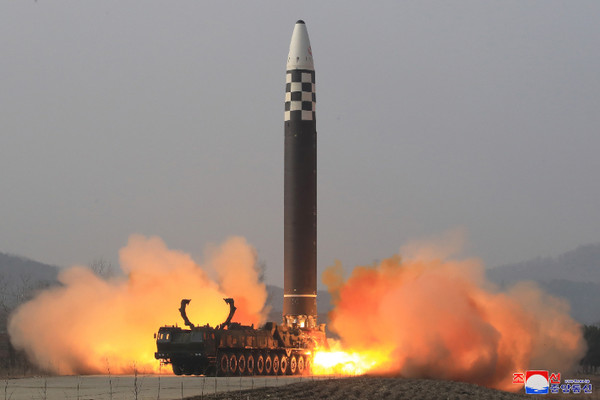
The 30-year U.S. effort to compel North Korea to give up its ballistic missile and nuclear weapons capabilities has rested on offering Pyongyang a simple choice: a relationship with the United States, or weapons and isolation.
North Korea’s leader, Kim Jong-un, has made his choice.
His government passed a law in September declaring the country a nuclear weapons state.
Mr. Kim called that designation “irreversible” and ruled out further talks on denuclearization.
The North has fired a dozen ballistic missiles in the past two months, is boasting of the ability to deploy tactical battlefield nuclear weapons and is expected to conduct another nuclear test — its seventh — perhaps as early as next week.
It’s time for the United States to face reality.
Efforts to encourage Mr. Kim to abandon his weapons have not only failed, but he is as clear as ever about using them to protect his country.
Washington needs to contemplate the unthinkable: accepting that North Korea is a nuclear state.
Successive U.S. administrations have steadfastly refused to do that.
It would be a setback for global nonproliferation and send the message that you can defy the international community — the United Nations has passed a series of resolutions condemning North Korea and imposing sanctions over the years — and get away with it.
But it also, ironically, may be the best way to reduce the persistent and growing threat of an inadvertent conflict on the Korean Peninsula by removing a major obstacle that prevents North Korea and the United States from meeting to work out their differences.
The risk of war has spiked over the past year as the two Koreas engaged in a rhetorical and actual arms race.
North Korea’s decision to call itself a nuclear state appears to show Mr. Kim is worried about a pre-emptive strike aimed at killing him and decapitating his regime, and with good reason; the administration of President Yoon Suk Yeol of South Korea has placed new emphasis on a strategy of deterring a North Korean nuclear attack by preparing for pre-emptive strikes that could include targeting Pyongyang’s senior leadership.
North Korea vowed last month that any attempt to remove him from power would prompt a nuclear counterattack.
But for that to work, it would mean granting other figures in his regime the authority to launch a nuclear counter-strike in his absence.
This is deeply worrying. More people with that authority means more scope for a deadly miscalculation.
Add to this the fact that North Korea’s actions have prompted calls in South Korea, which does not have nuclear weapons, to acquire them, and in Japan to bolster military spending and develop a stronger strike capability.
Something must be done to de-escalate the situation, but the United States has even fewer cards to play than before due to changes in the wider geopolitical landscape.
The Ukraine war has caused a deep rift between the United States and Russia and, to a lesser extent, Russia’s ally, China.
The three big powers were crucial participants in previous multiparty negotiations to disarm North Korea, which ultimately failed.
But Russia and China are now less likely to support U.S. pressure on North Korea; after Pyongyang resumed intercontinental ballistic missile tests this year, Beijing and Moscow vetoed a U.S. push for tighter sanctions on the North.
Mr. Kim seems to have sensed the changed dynamic and has doubled down on his relationships with China and Russia.
By Dr. Jeffrey Lewis
Published by The New York Times
Republished by The 21st Century
The views expressed in this article are solely those of the author and do not necessarily reflect the opinions of 21cir.com.
